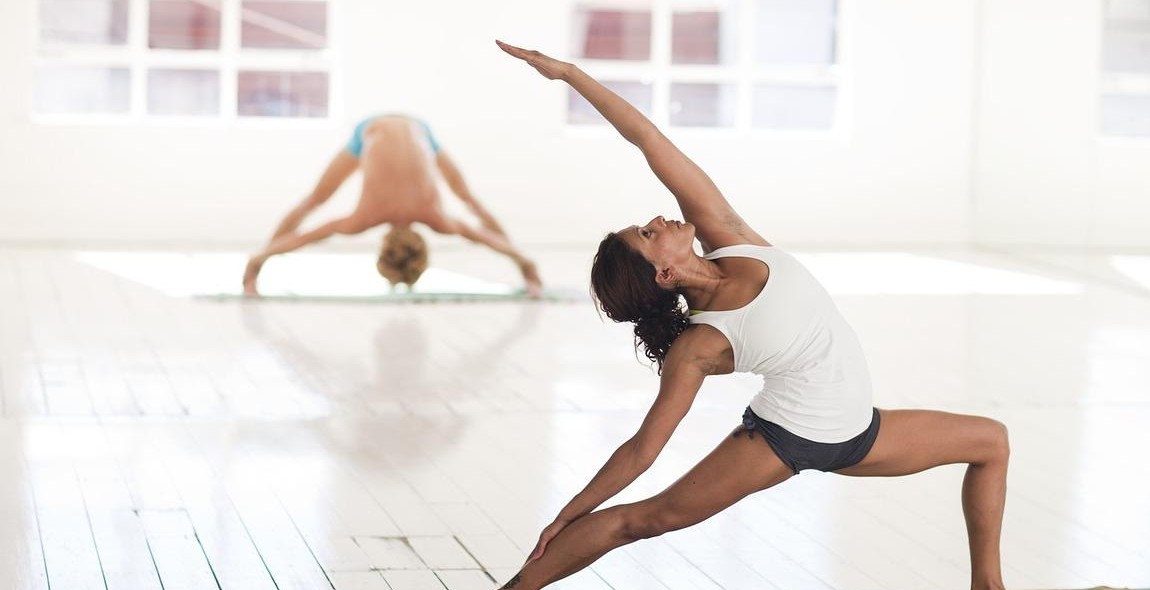How to Enhance Your Flexibility: Stretching Exercises for Increased Range of Motion
Flexibility is an essential component of physical fitness, which is often overlooked. Many people focus on building strength and endurance, neglecting the importance of stretching and improving their range of motion. However, flexibility plays a crucial role in preventing injuries, improving posture, and enhancing athletic performance.
Stretching exercises are an effective way to enhance your flexibility and increase your range of motion. But, it’s essential to know which stretches are suitable for your body and how to perform them correctly to avoid injury. In this article, I will share my personal experience and knowledge as a professional article writer and content creator to help you learn how to enhance your flexibility with stretching exercises.
The Benefits of Stretching Exercises
Stretching exercises have numerous benefits, including:
- Increased range of motion
- Improved posture and balance
- Reduced risk of injury
- Enhanced athletic performance
- Reduced muscle soreness and stiffness
Whether you are a professional athlete or a beginner, stretching exercises can help you achieve your fitness goals.

Why is Flexibility Important?
Flexibility is an essential component of overall health and fitness. It refers to the ability of your joints and muscles to move through their full range of motion. Having good flexibility has numerous benefits, including:
- Increased Range of Motion: Stretching exercises can help you achieve a greater range of motion, which can improve your performance in physical activities such as sports, dancing, and yoga.
- Reduced Risk of Injury: Good flexibility can help prevent injuries by allowing your joints and muscles to move freely and smoothly. It also helps to reduce muscle soreness and stiffness after exercise.
- Better Posture: Tight muscles can cause poor posture, which can lead to back pain and other problems. Stretching can help to lengthen tight muscles and improve your posture.
- Improved Balance and Coordination: Good flexibility can improve your balance and coordination, making it easier to perform everyday activities such as walking and climbing stairs.
Overall, flexibility is an important aspect of fitness that should not be overlooked. By incorporating stretching exercises into your routine, you can improve your range of motion, reduce your risk of injury, and enjoy a wide range of other health benefits.

Types of Stretching Exercises
Stretching exercises can help you increase your flexibility and range of motion. There are three main types of stretching exercises that you can try:
Static Stretching
Static stretching involves holding a stretch in a comfortable position for a period of time, typically 10-30 seconds. This type of stretching can help increase flexibility and reduce muscle tension. Static stretching is best done after a workout when muscles are warm and pliable.
Dynamic Stretching
Dynamic stretching involves moving through a range of motion in a controlled manner. This type of stretching can help improve flexibility, strength, and coordination. Dynamic stretching is best done before a workout to help warm up the muscles and prepare them for exercise.
Proprioceptive Neuromuscular Facilitation (PNF) Stretching
PNF stretching is a more advanced form of stretching that involves contracting and relaxing the muscles being stretched. This type of stretching can help improve flexibility and range of motion more quickly than other types of stretching. PNF stretching is best done with a partner or trainer who can assist with the stretches.
It’s important to incorporate a variety of stretching exercises into your routine to help improve your flexibility and range of motion. Consult with a trainer or healthcare professional to determine the best stretching exercises for your individual needs.

Static Stretching Exercises
Static stretching involves holding a stretch in a comfortable position for a certain amount of time. This type of stretching can help increase flexibility and range of motion. Here are some effective static stretching exercises:
Hamstring Stretch
 |
To perform a hamstring stretch, sit on the floor with your legs straight out in front of you. Reach forward and try to touch your toes, keeping your knees straight. Hold the stretch for 15-30 seconds and repeat on the other leg. |
Quad Stretch
 |
To perform a quad stretch, stand with your feet hip-width apart. Lift your right foot and bring your heel towards your buttocks. Hold onto your ankle with your right hand and hold the stretch for 15-30 seconds. Repeat on the other leg. |
Calf Stretch
 |
To perform a calf stretch, stand facing a wall with your hands on the wall at shoulder height. Step back with your right foot and keep it straight. Bend your left knee and lean into the wall, keeping your right heel on the ground. Hold the stretch for 15-30 seconds and repeat on the other leg. |
Shoulder Stretch
 |
To perform a shoulder stretch, stand with your feet shoulder-width apart. Bring your right arm across your chest and hold it with your left hand. Hold the stretch for 15-30 seconds and repeat on the other arm. |
Performing these stretches regularly can help improve your overall flexibility and range of motion, making it easier to perform daily activities and exercise with ease.
Dynamic Stretching Exercises
Dynamic stretching exercises help to increase the range of motion, improve flexibility, and prepare the muscles and joints for physical activity. These exercises are typically done before a workout or any physical activity. Here are some effective dynamic stretching exercises that can help you enhance your flexibility:
Walking Lunges
- Step forward with your right foot and lower your body until your right thigh is parallel to the ground.
- Make sure your left knee is hovering just above the ground.
- Push off your right foot and bring it back to the starting position.
- Repeat the process with your left foot.
High Knees
- Stand with your feet hip-width apart.
- Bring your right knee up to your chest as high as possible.
- Lower your right leg and repeat the process with your left leg.
- Alternate legs for a set number of reps or time.
Butt Kicks
- Stand with your feet hip-width apart.
- Bring your right heel to your butt as close as possible.
- Lower your right leg and repeat the process with your left leg.
- Alternate legs for a set number of reps or time.
Arm Circles
- Stand with your feet hip-width apart.
- Extend your arms out to the sides at shoulder height.
- Make small circles with your arms, gradually increasing the size of the circles.
- Repeat the process in the opposite direction.
Performing these dynamic stretching exercises regularly can help you enhance your flexibility and reduce the risk of injury during physical activity.
PNF Stretching Exercises
PNF (Proprioceptive Neuromuscular Facilitation) stretching is a highly effective technique for improving flexibility and range of motion. It involves contracting and relaxing the muscles in a specific pattern to achieve a deeper stretch. Here are two PNF stretching exercises that can help enhance your flexibility:
Leg Extension PNF Stretch
This stretch targets the hamstrings and quadriceps muscles in the legs.
- Start by sitting on the floor with your legs extended in front of you.
- Place a towel or resistance band around the ball of your foot and hold both ends with your hands.
- Slowly extend your leg while pulling on the towel or band to create resistance.
- Hold the stretch for 10-15 seconds, then relax and bring your leg back to the starting position.
- Repeat the stretch 2-3 times, each time trying to extend your leg a little further.
Shoulder PNF Stretch
This stretch targets the muscles in the shoulders and upper back.
- Start by standing or sitting with your back straight and your arms at your sides.
- Place one hand on the opposite shoulder and the other hand on the elbow of the same arm.
- Gently pull your elbow across your body towards the opposite shoulder, while resisting the movement with your hand on your shoulder.
- Hold the stretch for 10-15 seconds, then relax and return to the starting position.
- Repeat the stretch on the other side, and do 2-3 sets on each side.
PNF stretching should be done with caution and under the guidance of a qualified professional to prevent injury. Incorporating these exercises into your stretching routine can help you achieve greater flexibility and range of motion.
Tips for Safe Stretching
Stretching is a great way to improve your flexibility and enhance your range of motion. However, it’s important to do it safely to avoid injury. Here are some tips to keep in mind:
Warm-Up First
Before you start stretching, it’s important to warm up your muscles. This can be done through light cardio exercises, such as jogging in place or jumping jacks. Warming up helps to increase blood flow and prepares your muscles for stretching.
Don’t Overstretch
While stretching, it’s important to avoid overstretching. Overstretching can cause injury and can lead to muscle strains. Instead, stretch to a comfortable point and hold the stretch for 30 seconds.
Hold Each Stretch for 30 Seconds
When stretching, hold each stretch for at least 30 seconds. This gives your muscles enough time to relax and lengthen. Don’t bounce or jerk while stretching, as this can cause injury.
Breathe Normally
When stretching, it’s important to breathe normally. Don’t hold your breath, as this can cause your muscles to tense up and can lead to injury. Instead, take slow and deep breaths to help you relax into the stretch.
By following these tips, you can safely improve your flexibility and enhance your range of motion.

Conclusion
Flexibility is an essential aspect of overall fitness and wellness. Incorporating stretching exercises into your daily routine can significantly improve your range of motion, reduce the risk of injury, and enhance your overall physical performance.
Remember to start slowly and gradually increase the intensity and duration of your stretching exercises. Be patient and consistent in your practice, and you will see noticeable improvements in your flexibility over time.
It’s also important to listen to your body and avoid overstretching or pushing yourself too hard, as this can lead to injury and discomfort. Always warm up before stretching and cool down afterwards to prevent muscle strain and soreness.
Don’t forget to mix up your stretching routine and target different muscle groups to ensure a well-rounded flexibility program. You can also try incorporating yoga or Pilates into your routine for a more holistic approach to flexibility training.
Overall, enhancing your flexibility through stretching exercises is a simple yet effective way to improve your physical health and well-being. So why not start today and reap the many benefits that come with a more flexible body?
